
The Most Snake Infested Lakes in Virginia
Virginia is a state on the east coast of the United States with a large variety of animals living in its many wildland areas. This includes over 30 species of snakes, many of which reside in and around the lakes located within this state. If snakes are something that interests you, or you want to avoid them altogether, then this list may be of great use to you the next time you are traveling within Virginia. Let’s take a look at the most snake-infested lakes in the state of Virginia and what species can be found in these watery regions.
Smith Mountain Lake
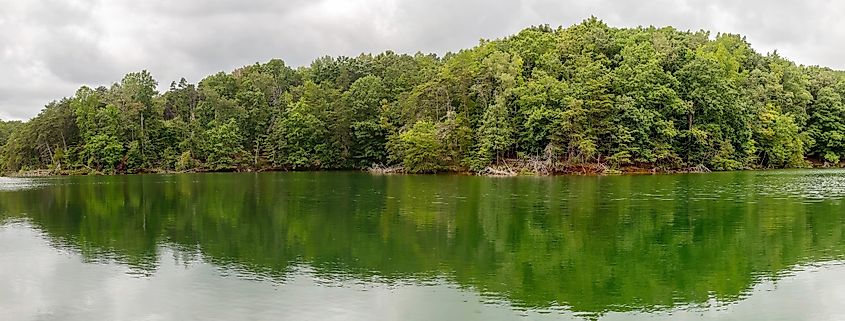
As the state's second-largest lake, Smith Mountain Lake is not only an important ecological zone but a very popular spot for vacationers looking to escape to the water for the weekend. Beaches, boating, and swimming abound here, and as you partake in these fun activities, you should be aware of the kinds of snakes that may be accompanying you.
This 32-square-mile (83 square km.) lake is home to a wide variety of snake species, including the Eastern rat snake, Northern water snake, Eastern worm snake, Rough green snake, and more, including the copperhead species, which, unlike the first four snakes on this list, are poison. But have no fear, as copperhead sightings here are rare, and nearby towns such as Lynchburg and Roanoke are equipped with easy-to-access medical facilities to cure snakebites.
Douthat Lake
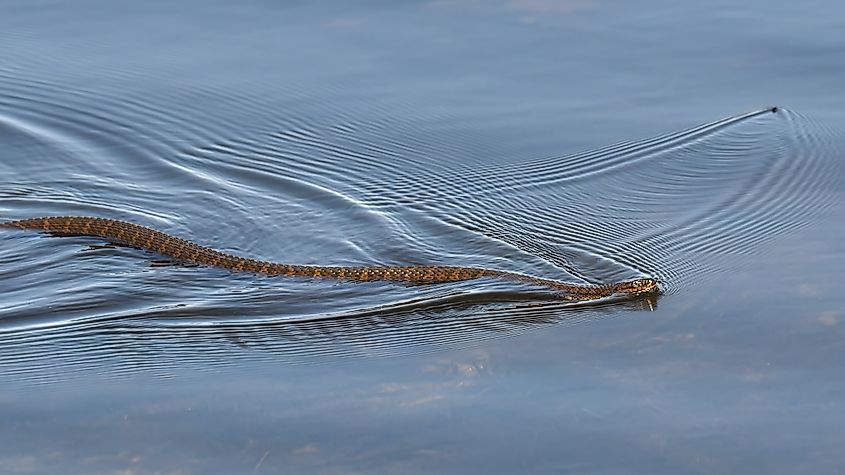
Douthat Lake is located within Douthat State Park, a park in the beautiful Alleghany Mountains on the northern edge of Virginia. The lake itself spans 50 acres and is a popular spot for fishing with rainbow, brown, and brook trout. Beyond the waters, the park is home to hilly landscapes and dense forests, which are filled with trails, campgrounds, and other outdoor fun. Douthat State Park also contains a collection of lakes and other waterbodies that the wildlife here calls home.
Douthat Lake and its surroundings are known to be home to species such as Eastern garter snakes, Northern water snakes, Northern copperheads, and one variety of venomous snakes, the Timber Rattlesnake. As with many venomous snakes, the Timber Rattlesnake is only a threat when cornered and frightened, so just be careful where you step as you walk the trails, circumventing the lake or anywhere else in the park.
Lake Gaston
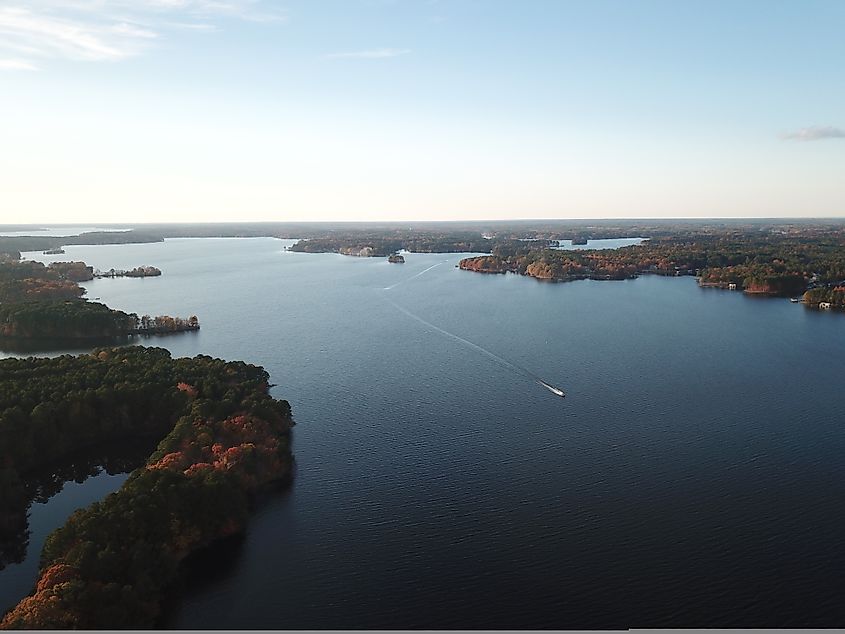
Lake Gaston is a lengthy 34-mile-long (55 km.) and 1.3-mile-wide (2.1 km.) lake that is located in both Virginia and North Carolina. Technically a reservoir, this lake is well-known for its cottages, easy access to docks for boating, excellent fishing, and other water-based activities. On top of the many types of fish that live here, including catfish and a variety of bass, Lake Gaston is also home to the Black rat snake, the Northern water snake, and the Banded water snake. The only snake out of this bunch that is venomous is the Black Rat snake, although all are known to bite.
If you are looking to explore this large lake from the water, boat rentals are available at places like the Holly Grove Marina. Thus, those interested in local snake species can head out to look for some firsthand while in the safety of a boat.
Happyland Camp Five Lake
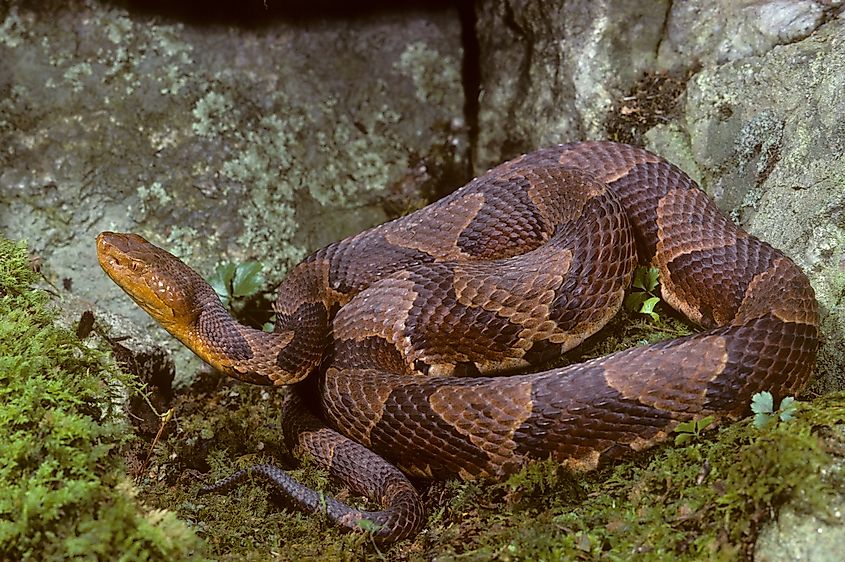
Happyland Camp Five Lake is a small lake nestled within the scenic Prince Willian Forest Park. It is one of the only lakes in the national forest reserve, resting along the northern edge of Virginia, just a short drive south of Washington D.C. The lake and its surroundings are full of flora and fauna, covered with forests and waterways such as Quantico Creek and South Fork Quantico Creek, the latter passing through Happyland Camp Five Lake.
Like many snake-infested regions, the snakes here tend to live near bodies of water, where much of their prey live, like fish, smaller reptiles, and small mammals. Around Happyland Camp Five Lake, you may find several species, like the Northern copperhead, Timber rattlesnake, Northern ringneck, Black rat snake, and Eastern garter snake. Be on the lookout while camping in the popular wooden cabins around the lake or even if you are simply hiking, swimming, or fishing in the area.
Lake Anna
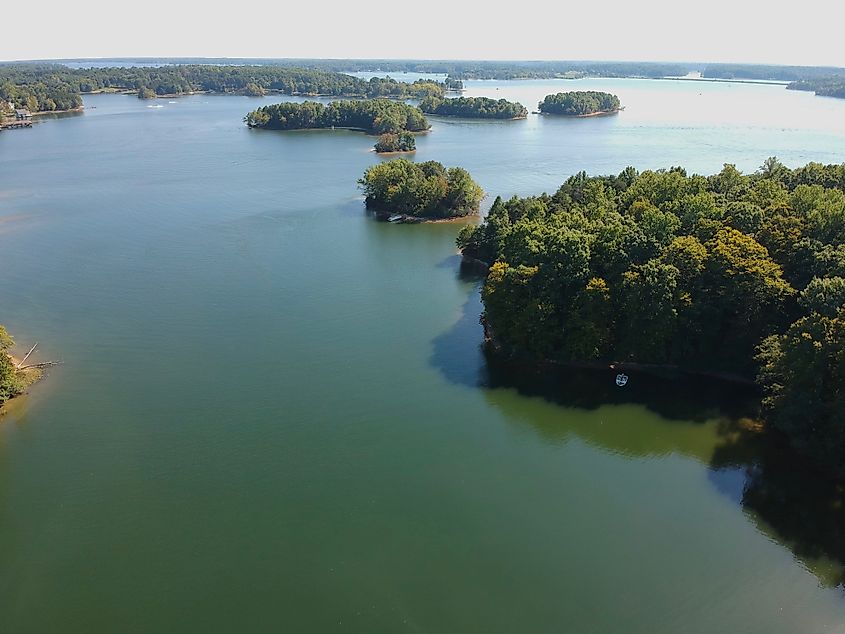
An easy day trip north of Richmond, Lake Anna is a large reservoir spanning 17 miles (27 km.) from end to end. Lake Anna State Park, which borders the shores to the lake's northern side, is a hotspot for wildlife viewing, and snakes are definitely on the watchlist here. Like many lakes in Virginia, common species found here include the North American racer, the Scarlet snake, and the copperhead. Only the copperhead carries potent venom, which can harm you, so be careful where you are walking, and make sure you know where the nearest hospital or medical center is, regardless of where you are along the 200-mile shoreline of Lake Anna.
Along with snakes, look out for the notable skink population that calls this place home. One can find the Little brown skink, the Common five-line skink, the colorful Broadhead skink, and more.
Better Understand the Wildlife of Virginia
Whether you are on the lookout for snakes or want to avoid them (don't worry, a healthy fear of snakes if not all that bad, as many snakes in the state of Virginia are venomous), knowing which lakes are infested by the slithery reptiles is a good bit of information before you head out of you're weekend escape to the water.
Understanding your environment and the wildlife within it is an essential part of being an eco-friendly steward. Regardless of where you are in the state, do your best to learn more about the species that live nearby and how you can reduce damage to their habitats.











